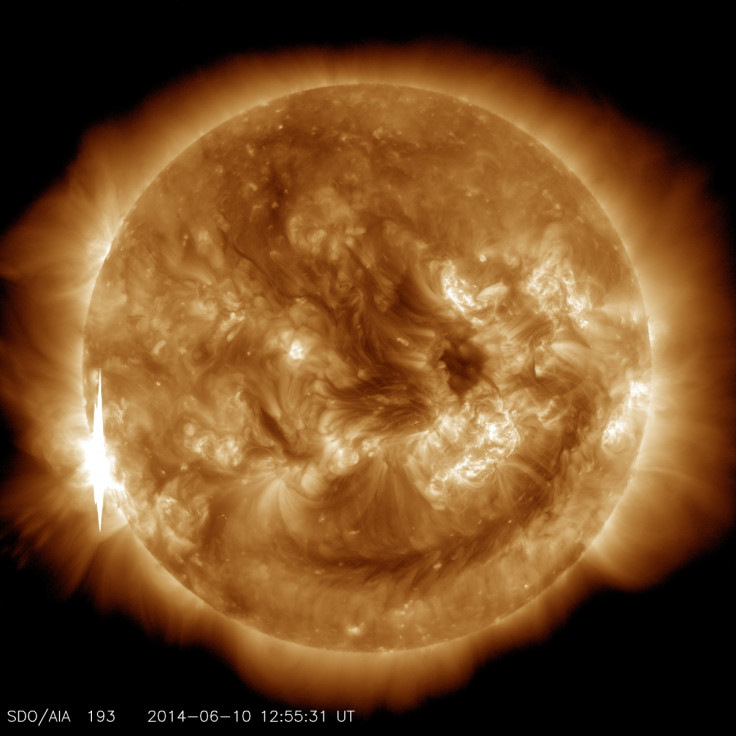Nasa: Sun Emits Two X-Class Solar Flares in Less Than Two Hours

The sun has emitted two X-class solar flares – the most intense flares to burst from the sun's surface.
The solar flares were captured by Nasa's Solar Dynamics Observatory. The first took place at 7.42am EDT on 10 June and was a X2.2 flare.
A solar flare is a powerful burst of radiation. X-class is the category used for the most intense flares, with the numbers indicating how strong it is.
"An X2 is twice as intense as an X1, an X3 is three times as intense," Nasa explained.
The second flare, which was X1.5, peaked at 8.52am EDT, less than an hour after the first.

"Harmful radiation from a flare cannot pass through Earth's atmosphere to physically affect humans on the ground," Nasa said. "However, when intense enough, they can disturb the atmosphere in the layer where GPS and communications signals travel."
The National Oceanic and Atmospheric Administration's National Weather Service said the solar flare would result in "short lived impacts" to high frequency communications.
Both Nasa and the NOAA said updates will be issued if further details emerge.
© Copyright IBTimes 2025. All rights reserved.






















